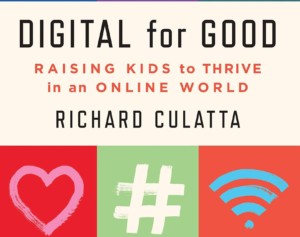Innovator’s Dilemma: Edu Style– The Long Transition to Digital

“We talk about the transformation of learning–adaptive and blended–but in visiting higher ed customers, it’s interesting to see what has changed and hasn’t,” said Simon Allen, CEO of Macmillan. “Some places don’t change–they want to know what’s in the new addition of a sociology textbook.”
Some people talk about the end of the textbook, but the majority of global education publisher Macmillan revenue is still print–and they saw strong growth of both print and digital content last year. Macmillan Science and Education and Macmillan Publishers are divisions of the family-owned German-based Holtzbrinck Publishing Group.
Allen got his start in the business as a U.S. college textbook rep in 1986. He spent 20 years based in London and traveling the globe–including 53 trips to China–to visit education institutions. In September Allen moved to New York City to lead the global enterprise. The move is likely to slow his travel schedule, he likes to spend time on campus to stay in touch with customers.
Dilemma. Innovation expert Clayton Christensen introduced us to the Innovator Dilemma– the fact that good companies can lose their market leadership to disruptive innovation and that they inevitably will face the dilemma of whether and how to cannibalize their own sales with new products and services. In some sectors, disruption happens fast–think about the transition from video tape to CD to streaming video. Given local control, faculty influence, and limited incentives to change, education can be slower to change. But there are lots of innovative instructors and new delivery formats driving demand for innovation–it’s a bipolar customer world. The group of companies former knows as publishers (some now prefer to be known as digital learning service providers) face a particularly challenging shift from print to digital–one likely to be studied by business schools in the next decade.
Allen cautions his colleagues against arrogance noting that “some people still want print–we let customer choose.” Digital delivery has added a new customer option but it has added a new cost center and degree of complexity to the instructional materials business.
He spoke at an education investors conference last week and they asked why the transition has been so slow. Allen told them the biggest reason is teacher preference; some believe in digital but many are happy with print. He added, “Blended Learning is what we’re all about, with print and digital content and assessment.
It’s not just crusty instructors that are slow to change–some young people like paper. “Our new biology text, How Life Works, had a big launch and a big chunk of that was in loose leaf sales,” said Allen.
The sales challenge include very different purchase patterns. In traditional higher ed, instructors make textbook decisions. New online and blended networks have more centralized decision making and purchasing. Both markets have been strong for Macmillan.
While open education resources are gaining use in K-12, they remain a small fraction of the higher ed market. Allen said “Open content will become a competitor but it will also create opportunities to partner.”
A global workforce of about 3,000 people are distributed across three business units of roughly equal size: higher education, English language learning, and K-12 curriculum (all non US). The global P-20 business faces differential rates of digital adoption in almost every market and across product lines–a challenge requiring product leads to drive change by encouraging customers to consider new versatile often less expensive alternatives to traditional print lines.
Macmillan continues to invest in innovative digital products. Learning Curve is Macmillan’s adaptive learning engine. Game-based quizzes motivate students to engage with course material. Learning Curve was recently integrated with LaunchPad their learning management system (LaunchPad also integrates with Blackboard, Desire2Learn, and soon Canvas).
Efficacy. “It’s becoming more important than ever to understand how well students performed,” said Allen.
About Pearson’s new efficacy framework, Allen said “It’s great, it builds on John Fallon’s long-term commitment to evidence-based materials.” He said efficaciousness has never been more important, “we’re all trying to move our customers toward better results.” He noted that as Cengage emerged from bankruptcy with a strong focus on student performance.
On Pearson’s decision to report efficacy results, Allen said, “It’s very important, it’s right, it will show that students improved their outcomes compared to alternatives.” He added “If there isn’t evidence, we should all report that as well.” Allen said that reporting efficacy as well as financial results will help transform the industry.
Listening to customers and focusing on results important to them will help Macmillan solve the innovators dilemma.








0 Comments
Leave a Comment
Your email address will not be published. All fields are required.